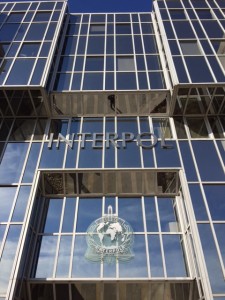The first Annual SYNCHRO-NET meeting
The SYNCHRO-NET project had its first annual project meeting in Barcelona in early June. I had a pleasure to take part in the three-day event and enjoy the welcoming atmosphere and sunny weather of the Catalonian capital.
For those who are not yet familiar with the project, SYNCHRO-NET is a three-and-half-year demonstration project on advanced logistics optimization. The project seeks to advance and promote new concepts of synchro-modality and slow steaming for more cost-efficient, less congested and greener intermodal supply chains. The project includes three demonstrations that test slow-steaming and synchro-modal solutions in real international logistics networks. The first demonstrator involves shipping of goods from the Far-East to the ports of Valencia, Algeciras and Barcelona, and subsequent movement by rail inland and final short truck movement. The second demonstrator focuses on regional logistics movements through the Port of Cork. The third demonstrator will address multimodal container movements in major European routes. The project is funded by the European Commission under the Horizon 2020 Programme.
During the two first days of the meeting, the Partner Forum discussed the SYNCHRO-NET work ahead: standardization, development of a tool for logistics optimization, real-world demonstrations, and exploitation and dissemination of the project’s results. The discussion produced some interesting findings and conclusions. The Partner Forum observed that, given the large number and variety of factors, the optimization of shipping and logistics in terms of cost (including CAPEX, crew cost, fuel), duration, environmental impact, reliability and various types of risks is nothing but an easy task. For example, weather, tide and state of the sea affect maritime logistics, its speed, reliability and cost-efficiency. There was also a great deal of discussion about the dimensions of risk in the meeting. The International Organization of Standardization (ISO) defines risk as the “effect of uncertainty on objectives.” In this light, the concept of risk in the SYNCHRO-NET context covers at least damage to cargo, lead time variability, variability of cost, and possibility of theft and piracy. The Forum concluded that cost-efficiency and quality of international logistics depend largely on real-time awareness and visibility over logistics operations: “the sooner you know, the lower the cost will be to solve the problem.”
The three days of SYNCHRO-NET meetings culminated in the International Logistics and Material Handling (SIL) conference, the primary annual industry fair and networking event for logistics professionals in Spain. In the conference, Mr. Santiago Blasco (DHL) introduced SYNCHRO-NET at the “Consumer & Goods” working session for a large audience. Later that day, a group of leading logistics experts from Spain and the rest of Europe debated on pressing topics at three SYNCHRO-NET roundtables. The roundtable sessions focused on the general theme “How to build win-win solutions synchro-modal logistics stakeholders.” Here are brief summaries of the roundtable sessions:
- “Smart Steaming – how to build a win-win solution for all stakeholders.” The members of the roundtable raised concerns about organizational, technical and business challenges of future slow steaming. There are obvious draw-back in slow steaming such as longer lead times and lower capacity utilization. However, the panel concluded that smart rather than slow steaming is here to stay: “While maintaining high service level, we can make logistics more cost-efficient.”
- ”Effective management of synchro-modal logistics.” The panelists of the second session argued that the concept of synchro-modality is not yet very established in the logistics sector. Even so, the panel agreed that synchro-modality builds on real-time optimization, risk analysis and advanced, ITC-enabled logistics planning. Synchro-modality requires visibility over the supply chain, so that logistics planers react to contingencies and can make effective decisions in real time. The panel concluded that collaboration across supply chain operators – especially among shippers, carriers, freight forwarders – is the key to synchronized international logistics.
- “Synchro-modal IT tools: innovation and value added to the logistics industry.” The third panel focused on the rather technical topic of leveraging cloud-based IT architecture for advanced logistics planning. The panelists saw a great potential in modern ICT solutions to enable synchro-modality, smart steaming and other ways for optimizing international freight transport. There still remain challenges for bridging a broad array of different computer systems for higher degree of logistics interconnectedness and interoperability.
The SYNCHRO-NET project has had a strong start, and the project progresses on the right track and at the full speed after one year of work. There is still much hard work to do over the next six months, for CBRA and other partners. In autumn, CBRA researchers will be focusing on reviewing policies, legislations, and standards that have an effect on synchro-modality and slow steaming. The CBRA team will also continue promoting the SYNCHRO-NET project and its findings at various events and publications. Stay with SYNCHRO-NET and visit the project website www.synchro-net.org.
CBRA Blog by Dr. Toni Männistö







